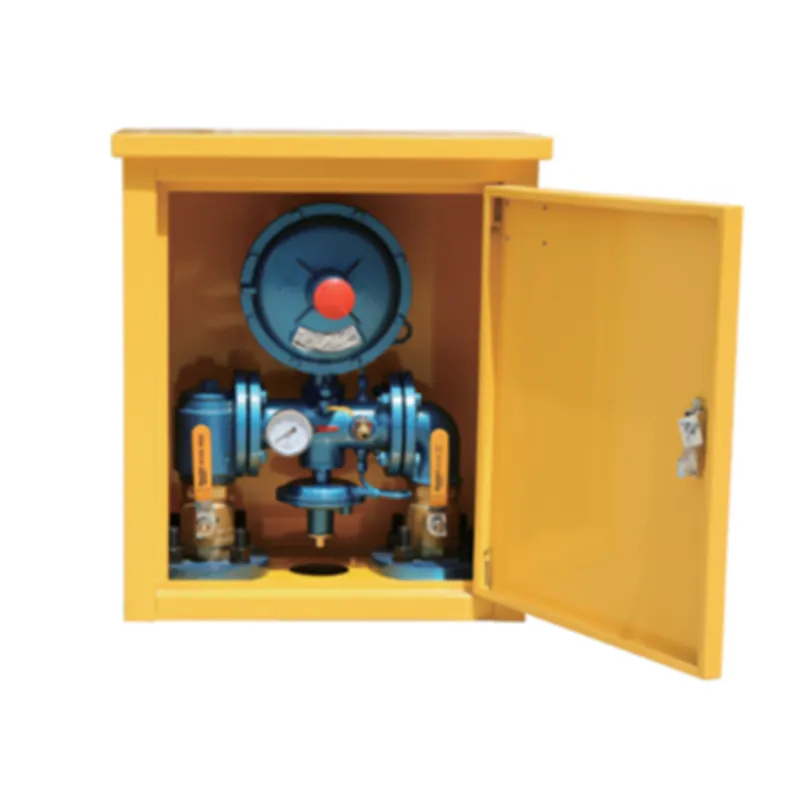
Nov . 07, 2024 06:00
Back to list
Understanding the Functionality of Natural Gas Pressure Regulation Devices for Safe Usage
Understanding Natural Gas Pressure Reducers Essential Components for Safe Gas Delivery
Natural gas is a critical energy source that powers our homes, businesses, and industries. However, the safe and efficient delivery of natural gas relies on various components, one of the most important being the natural gas pressure reducer. These devices are essential for ensuring that gas is delivered at the appropriate pressure for consumption, thereby protecting both users and equipment from potential hazards associated with high-pressure gas.
What is a Natural Gas Pressure Reducer?
A natural gas pressure reducer, also known as a pressure regulator, is a device that lowers the high pressure of gas coming from the supply line to a safe and usable level for distribution and application in appliances like heaters, stoves, and generators. The function of the pressure reducer is vital in maintaining the integrity of gas distribution systems and ensuring that natural gas is delivered safely and effectively.
How Does a Natural Gas Pressure Reducer Work?
The operation of a natural gas pressure reducer is grounded in the principles of fluid dynamics. The device typically consists of an inlet and outlet, along with a valve that modulates the flow of gas. Incoming high-pressure natural gas encounters a diaphragm or spring mechanism within the regulator that senses the pressure drop downstream. As the downstream pressure decreases, the diaphragm moves, adjusting the valve position to allow more gas through until the desired pressure is attained.
This automatic adjustment helps maintain a consistent pressure, which is crucial for gas appliances that require a specific inlet pressure to operate efficiently. Most home appliances are designed to operate at a low pressure, typically around 7 inches of water column, which is significantly lower than the mains pressure.
Importance of Pressure Regulation in Natural Gas Systems
1. Safety The most critical function of a pressure reducer is safety. High-pressure natural gas can lead to dangerous situations, including leaks, explosions, or equipment damage. By regulating the pressure to a safe level, pressure reducers help prevent these hazards.
2. Efficiency Appliances that operate at incorrect pressure levels may not function optimally. For instance, too much pressure can cause a device to malfunction, while too little pressure can lead to reduced performance. A pressure reducer ensures that appliances receive the proper gas pressure, enhancing efficiency and extending the life of the equipment.
natural gas pressure reducer

3. Compliance with Standards Regulatory agencies set specifications for natural gas delivery, which include pressure requirements. Proper functioning pressure reducers help maintain compliance with these standards, thereby ensuring the safety and reliability of gas distribution systems.
4. Adaptability Natural gas pressure reducers can be utilized in various applications, from residential to industrial settings. They can be designed to handle different volumes and pressures, making them adaptable to different operational needs.
Types of Natural Gas Pressure Reducers
There are several types of natural gas pressure reducers, including
- Single-Stage Regulators These are used mainly for low-pressure applications and are designed to reduce pressure once.
- Two-Stage Regulators These are more complex and typically used for varying pressure levels. The first stage reduces the pressure significantly, while the second stage fine-tunes the pressure to the desired level.
- Automatic Reset Regulators These regulators can automatically adjust back to preset pressures after a change in flow or pressure, ensuring constant delivery under varying conditions.
Conclusion
Natural gas pressure reducers play a crucial role in the safe, efficient, and reliable delivery of natural gas to consumers. By controlling gas pressure, they not only enhance appliance performance but also protect users from the dangers associated with high-pressure systems. Understanding the function and importance of these devices is essential for anyone involved in the management or use of natural gas systems, ensuring both safety and efficiency in everyday applications. As energy demands continue to grow, so does the need for reliable components that facilitate safe gas delivery—making natural gas pressure reducers invaluable in the energy landscape.
Latest news
-
Safety Valve Spring-Loaded Design Overpressure ProtectionNewsJul.25,2025
-
Precision Voltage Regulator AC5 Accuracy Grade PerformanceNewsJul.25,2025
-
Natural Gas Pressure Regulating Skid Industrial Pipeline ApplicationsNewsJul.25,2025
-
Natural Gas Filter Stainless Steel Mesh Element DesignNewsJul.25,2025
-
Gas Pressure Regulator Valve Direct-Acting Spring-Loaded DesignNewsJul.25,2025
-
Decompression Equipment Multi-Stage Heat Exchange System DesignNewsJul.25,2025

